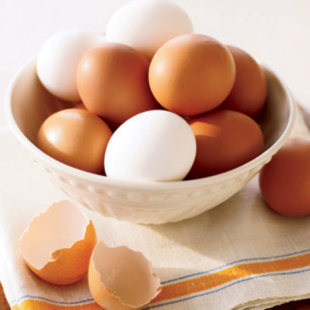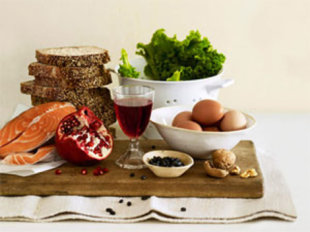4 Food Rules to Shrink and Soothe Your Belly for a 21-Day Tummy
Reblogged: From Yahoo Health So, this is a little awkward. But a few years ago, I began to notice that my digestion was becoming less regular. I had almost constant pain and bloating and had gained nearly ten pounds. Then I read the stats: From burps and groans to discomfort and moans, millions of Americans have similar tummy issues. So I did what any health journalist would: I researched the issue, and I asked my staff of editors at Reader’s Digest to help. We uncovered reams of pioneering studies and learned that the very foods that make your belly feel better are the same ones that make it flatter.
It’s a diet dream: an eating regimen that trims my tummy can also solve GI problems like heartburn and reflux, gas and bloating, constipation, diarrhea, and irritable bowel syndrome (IBS). In a nutshell, we found that two keys for a slimmer, happier stomach: balance gut bacteria and lower inflammation. An unhealthy mix of gut bacteria can lead to constipation, diarrhea, gas, bloating, and IBS. Inflammation can upset your stomach and pack on pounds if it becomes chronic.
I asked Kate Scarlata, a registered dietitian who specializes in digestive disorders, to help convert all of this new science into an eating plan, and I called it the 21-Day Tummy diet. If you follow it, you’ll enjoy plenty of foods that soothe your stomach (I call them Belly Buddies) and eliminate those that aggravate it (I call them Belly Bullies). To start, read up on the plan’s four main food rules:

1. Load up on magnesium-rich foods.
Deficiency in this key mineral is linked to obesity and inflammation. The 21-Day Tummy diet features delicious spinach, brown rice, and pumpkin seeds, among other whole foods, to boost your magnesium intake.
More: 7 Best Foods for Your Belly »
2. Eat plenty of anti-inflammatory fats.
Pair the MUFAs in foods like dark chocolate, olives and avocados that specifically target visceral belly fat with omega-3’s (found in foods like salmon and walnuts) that combat inflammation and the many diseases associated with it. You’ll protect yourself from heart disease, depression, type 2 diabetes, stroke, cancer, and, of course, gastrointestinal disorders and weight gain.
More: 7 Worst Foods for Your Belly »
3. Cut back on carb-dense foods.

This tip may change the way you look at “good carbs” and “bad carbs” forever. Carb-dense foods can alter the balance of our gut
flora, triggering inflammation. Foods are considered carb-dense if they have a high ratio of carb grams relative to their weight. A small potato, which many consider a bad carb, weighs 170 grams, but it’s mostly water; only about 23 percent of it is carbohydrate. A plain rice cake, by contrast, weighs only nine grams, but almost 80 percent of it is carbohydrate! To minimize carb-dense foods, the 21-Day Tummy diet cuts out sugar, refined carbs, and most grains. Instead, it adds carb-light, natural foods like bananas, potatoes, and leafy green vegetables. Lean proteins and healthy fats are also carb-light.
4. Steer clear of FODMAPs
Clear your system of FODMAPs, the rapidly fermentable carbs or sugars that can play an ugly role in your digestive system, causing gas, bloating, diarrhea, and constipation. Everything from the fructose in agave nectar to the lactose in milk can be fast food for the bacteria in your gut, which is bad news for those of us with sensitive stomachs. The 21-Day Tummy diet minimizes FODMAPs, then guides you through a test to see which ones you can tolerate after three weeks. To learn more about the plan and get the book, click here.
MORE FROM READER’S DIGEST
- The 7 Best Foods for Your Belly
- The 7 Worst Foods for Your Belly
- 6 Delicious Recipes to Lose Weight and Help with Digestion
- Soothe and Shrink Your Belly: Our 21-Day Tummy Plan
Related articles
- Get a 21-Day Tummy! How to Shrink and Soothe Your Stomach (rd.com)
- Lose Belly Fat (weight-loss-tips-and-secrets.com)
- Soothe and Shrink Your Belly: Our 21-Day Tummy Diet Plan (rd.com)
- Are Your Digestion Problems Worse Than You Thought? (rd.com)
- 4 Habits That Are Making You Feel Bloated (huffingtonpost.com)
- Cheapest IBS-Free at Last! Second Edition. Change Your Carbs, Change Your Life with the FODMAP Elimination Diet Big Discount (smith956.wordpress.com)



 fact: One large egg has 213 milligrams cholesterol, and health experts suggest limiting
fact: One large egg has 213 milligrams cholesterol, and health experts suggest limiting  Myth 5: Eating the day’s foods in certain combinations will help you slim down. Fact: Seventy years ago, Good Housekeeping Research Institute experts declared this fad nonsense, and we say the same thing today. Almost all foods are combinations of protein, fat, and carbohydrates. In whole milk, for instance, about 20 percent of the calories are from protein, 50 percent from fat, and 30 percent from carbohydrates. The digestive system has no problem handling different types of food at the same time. If you do happen to shed pounds on a “food-combining” diet, it’s simply because you’re eating fewer calories overall. Myth 6: Your genes determine your metabolism and body weight.
Myth 5: Eating the day’s foods in certain combinations will help you slim down. Fact: Seventy years ago, Good Housekeeping Research Institute experts declared this fad nonsense, and we say the same thing today. Almost all foods are combinations of protein, fat, and carbohydrates. In whole milk, for instance, about 20 percent of the calories are from protein, 50 percent from fat, and 30 percent from carbohydrates. The digestive system has no problem handling different types of food at the same time. If you do happen to shed pounds on a “food-combining” diet, it’s simply because you’re eating fewer calories overall. Myth 6: Your genes determine your metabolism and body weight. Best time to exercise?st time to exercise.
Best time to exercise?st time to exercise.

